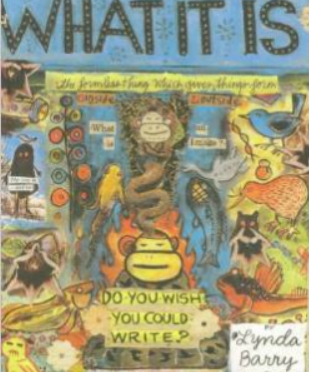After some twitter musings the other night, I got several requests for my list of “books that aren’t about game design that I think game designers should read.” Now, don’t get me wrong, there are many wonderful texts on game design and game development in general with all sorts of useful information. However, I am fond of supplementing these reads with books from unrelated fields that still have something to teach about game design. I think it is because you have to forge your own connections when you read them, and when you do your own digging and have the insights yourself without them being presented to you, I find it tends to make the insights a little stickier. Basically it makes for good learnin’, so here we go!
Impro: Improvisation and the Theatre – Keith Johnstone
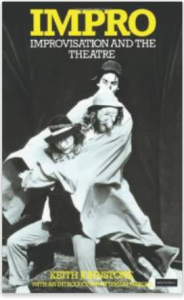 I think that Improv was one of the most useful classes I took in my formal game development education, and most of the things I learned came from this book. There are several vectors of useful game designer knowledge in here – storytelling, perception of your audience and all that, yes. But more importantly, there are secrets about how humans work that unlock powerful tools for teamwork that I use almost every day as a designer. In particular the chapter about status is extraordinarily useful.
I think that Improv was one of the most useful classes I took in my formal game development education, and most of the things I learned came from this book. There are several vectors of useful game designer knowledge in here – storytelling, perception of your audience and all that, yes. But more importantly, there are secrets about how humans work that unlock powerful tools for teamwork that I use almost every day as a designer. In particular the chapter about status is extraordinarily useful.
What it Is – Lynda Barry
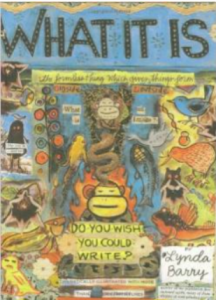 My favorite lesson in this book was the curiosity and wonder that struck me when I encountered its unusual format for the first time. I try to recall that feeling often in attempts to recreate it in some game contexts. This is a book about writing, and a bit about drawing, but more generally it is a book about pulling images out of your brain for creative use. If you read it with your designer hat on, you’ll notice all sorts of delightful tricks in its collage-like structure for pulling your mind around, but the content itself is also a wonderful lens for probing out creative thought.
My favorite lesson in this book was the curiosity and wonder that struck me when I encountered its unusual format for the first time. I try to recall that feeling often in attempts to recreate it in some game contexts. This is a book about writing, and a bit about drawing, but more generally it is a book about pulling images out of your brain for creative use. If you read it with your designer hat on, you’ll notice all sorts of delightful tricks in its collage-like structure for pulling your mind around, but the content itself is also a wonderful lens for probing out creative thought.
A Pattern Language – Christopher Alexander
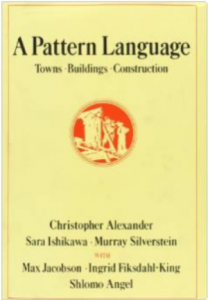 I won’t lie, this is a beast of a book, and at first skim it can feel a little dry. But there are so many useful snippets of insight here that can be applied to world design and level design. On another layer, it gave me a lot of insights on the systems design front just in how the patterns related to one another up and down the scale from patterns for city layouts all the way down to patterns guiding how you choose decorative trim for a window. I have heard that his other essay series, the Nature of Order, also has bountiful insights, but I haven’t read it yet (it’s on my list).
I won’t lie, this is a beast of a book, and at first skim it can feel a little dry. But there are so many useful snippets of insight here that can be applied to world design and level design. On another layer, it gave me a lot of insights on the systems design front just in how the patterns related to one another up and down the scale from patterns for city layouts all the way down to patterns guiding how you choose decorative trim for a window. I have heard that his other essay series, the Nature of Order, also has bountiful insights, but I haven’t read it yet (it’s on my list).
On Writing : A Memoir of the Craft – Stephen King
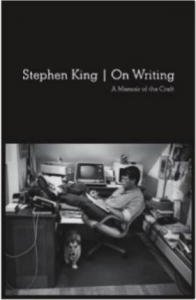 Another writing book, but one of a different tone and structure and one with different insights to share. The most striking image from this came from King likening writing fiction to digging up a fossil, as though the whole thing is down there, just waiting to be coaxed out and carefully brushed off. There are times when design can be like that, so reading this drew all sorts of new connections between the two, and I feel I can approach these instances better because of it. His telling of the muse resonated with my own level design dragon for sure.
Another writing book, but one of a different tone and structure and one with different insights to share. The most striking image from this came from King likening writing fiction to digging up a fossil, as though the whole thing is down there, just waiting to be coaxed out and carefully brushed off. There are times when design can be like that, so reading this drew all sorts of new connections between the two, and I feel I can approach these instances better because of it. His telling of the muse resonated with my own level design dragon for sure.
Better: A Surgeon’s Notes on Performance – Atul Gawande
 The most recent addition to the list, and the one that prompted me to write this post to begin with, this is a book about performance from the perspective of the medical industry. Though each of the chapters and associated stories had lots of little connections, the most striking was the afterword, in which he gives suggestions on Becoming a Positive Deviant. The quote that struck me the most was this one: “The hardest question for anyone who takes responsibility for what he or she does is, What if I turn out to be average?”
The most recent addition to the list, and the one that prompted me to write this post to begin with, this is a book about performance from the perspective of the medical industry. Though each of the chapters and associated stories had lots of little connections, the most striking was the afterword, in which he gives suggestions on Becoming a Positive Deviant. The quote that struck me the most was this one: “The hardest question for anyone who takes responsibility for what he or she does is, What if I turn out to be average?”
Getting Things Done – David Allen
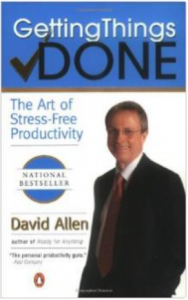 I’m a little embarrassed to admit this one being on my list, because if you read up on the people who follow the GTD philosophy they can come off as a little…cultish? And when you read it you feel like “this was written for corporate executives.” But there you have it, it’s useful as hell. From the purely productive standpoint of being a game designer, this book has been a lifesaver, and I still follow the method more or less in everything I do. Even if the whole philosophy doesn’t work for you, there a ton of little tips and paradigm shifts that can make structuring design work a lot more doable. Just learning to think about things through the lens of “knowledge work” and what that even means helped me immensely.
I’m a little embarrassed to admit this one being on my list, because if you read up on the people who follow the GTD philosophy they can come off as a little…cultish? And when you read it you feel like “this was written for corporate executives.” But there you have it, it’s useful as hell. From the purely productive standpoint of being a game designer, this book has been a lifesaver, and I still follow the method more or less in everything I do. Even if the whole philosophy doesn’t work for you, there a ton of little tips and paradigm shifts that can make structuring design work a lot more doable. Just learning to think about things through the lens of “knowledge work” and what that even means helped me immensely.
Harpo Speaks! – autobiography of Harpo Marx
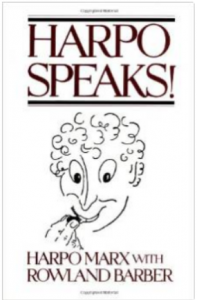 When I read this book for the first time, I wasn’t quite a game designer yet, but it struck me right in the heart. “I need to be having more adventures,” it made me think, and not in a frivolous fashion. “I need to be able to tell more stories when I’m old.” When I re-read it as a designer, I realized that I was absorbing experiences and learning more about their structure. If anything it inspired me to get out and consume the world on multiple fronts, and gave me insights on new ways to use the lens of essential experience.
When I read this book for the first time, I wasn’t quite a game designer yet, but it struck me right in the heart. “I need to be having more adventures,” it made me think, and not in a frivolous fashion. “I need to be able to tell more stories when I’m old.” When I re-read it as a designer, I realized that I was absorbing experiences and learning more about their structure. If anything it inspired me to get out and consume the world on multiple fronts, and gave me insights on new ways to use the lens of essential experience.
The Gentle Art of Verbal Self Defense – Suzette Haden Elgin
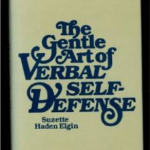 Alright, so, this is actually a sneak entry. It’s not on my list in context of learning more about game design, but given the world climate recently I thought I’d sneak in here for all of you when your brains are in the receptive “books I should probably read” mode.
Alright, so, this is actually a sneak entry. It’s not on my list in context of learning more about game design, but given the world climate recently I thought I’d sneak in here for all of you when your brains are in the receptive “books I should probably read” mode.
So there you have it, there’s my list! What about you? If you have a list of non-design books for designers, I would love to read them!
